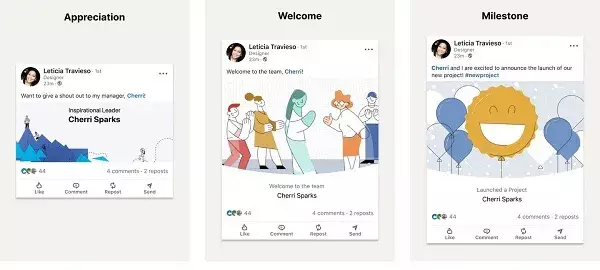LinkedIn’s recent decision to eliminate a variety of its templated posts marks a significant pivot in its approach to user engagement. These templates, which included celebratory graphics and animations, were a familiar feature for many users. As LinkedIn communicates to its members, the majority of these posts, with the exception of the confetti template, will no longer be available. This change, while seemingly minor, reflects a broader strategic focus aimed at encouraging users to create more personalized content.
The removal of these infrequently used templates—such as the Appreciation, Welcome, and Skill Assessment Badge types—highlights a deliberate effort by LinkedIn to shift the narrative around content creation on its platform. The company’s message underscores the importance of user-generated content by reassuring users that they can still celebrate achievements with their own words, images, and videos. This transition suggests that LinkedIn may be prioritizing authenticity and originality over generic, animated posts, which has the potential to enrich user experience.
Though it may seem like LinkedIn is simply stripping away aesthetic alternatives, one could argue that this is a forward-thinking move. The current digital landscape favors fresh and engaging content. By promoting original posts, LinkedIn might foster a community that values quality and uniqueness. Additionally, the previously dominant graphic styles may appear outdated, and their removal could usher in a new era where users rely more heavily on fresh, personal content that resonates more genuinely with their connections.
The transition also aligns with shifting user preferences towards multimedia engagement—especially video content. As platforms continue to evolve, users are increasingly drawn toward dynamic formats that allow for greater expression. While some LinkedIn users may mourn the loss of familiar graphics, this alteration could ultimately encourage a richer variety of interactions across the platform. With generative AI becoming a focal point for content creation, it wouldn’t be surprising if LinkedIn eventually introduces tools that allow users to design custom post backgrounds for announcements, thereby enhancing creative freedom.
As LinkedIn navigates its way through this transition, its emphasis on customization and originality seems set to redefine how its community interacts and shares professional milestones. Although the removal of these templates may initially concern some users, the potential for enhanced engagement and deeper connections through personalized content could significantly benefit the platform. In this light, the future of LinkedIn may be one where creativity flourishes, setting the stage for vibrant networking opportunities and professional storytelling. This shift could represent not only a change in post styles but also a change in how users perceive and interact with each other on the platform, marking a promising evolution in LinkedIn’s mission to help professionals connect and grow.


Leave a Reply